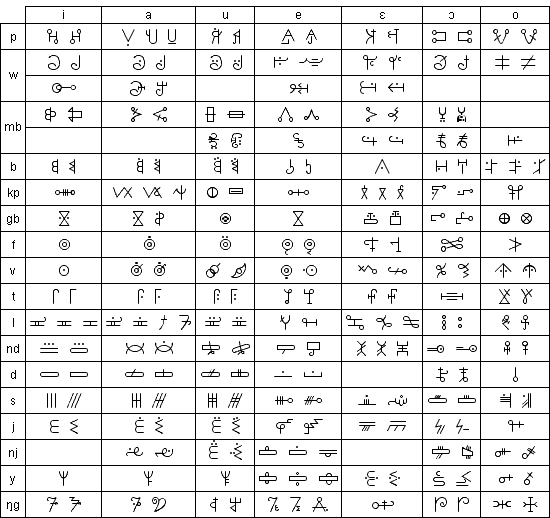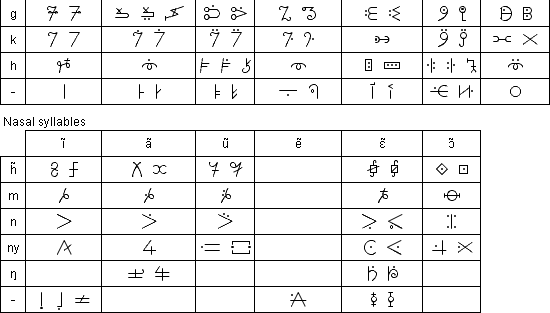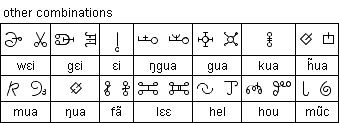During the 1940s the British set up the Protectorate Literacy Bureau in Bo with the aim of teaching the Mende people to read and write with a version of the Latin alphabet. As a result, usage of Kisimi's syllabary gradually diminished and it was eventually forgotten.
Mende (Mɛnde yia) is a Mande language spoken by about 1.26 million people in Liberia and Sierra Leone.
Notable features
- Type of writing system: syllabary
- Direction of writing: right to left in horizontal lines.
- Number of symbols: 195
- Some syllables here several versions.
Mende syllabary



The Mende font used on this page was created by Jason Glavy
Sample text (Mende script)

Sample text (Latin alphabet)
Numuvuisia Kpɛlɛɛ ta ti le tɛ yɛ nduwɔ ya hu, tao ti nuvuu yei kɛɛ ti lɔnyi maa hɛwungɔ. Kiiya kɛɛ hindaluahu gɔɔla a yɛlɔ ti hun. Fale mahoungɔ ti ti nyɔnyɔhu hoi kia ndeegaa.Translation
All human beings are born free and equal in dignity and rights. They are endowed with reason and conscience and should act towards one another in a spirit of brotherhood.(Article 1 of the Universal Declaration of Human Rights)
Links
Information about Kisimi Kamarahttp://www.sierra-leone.org/heroes7.html









.jpg)
.jpg)

.jpg)





0 comments:
Post a Comment
Note: Only a member of this blog may post a comment.